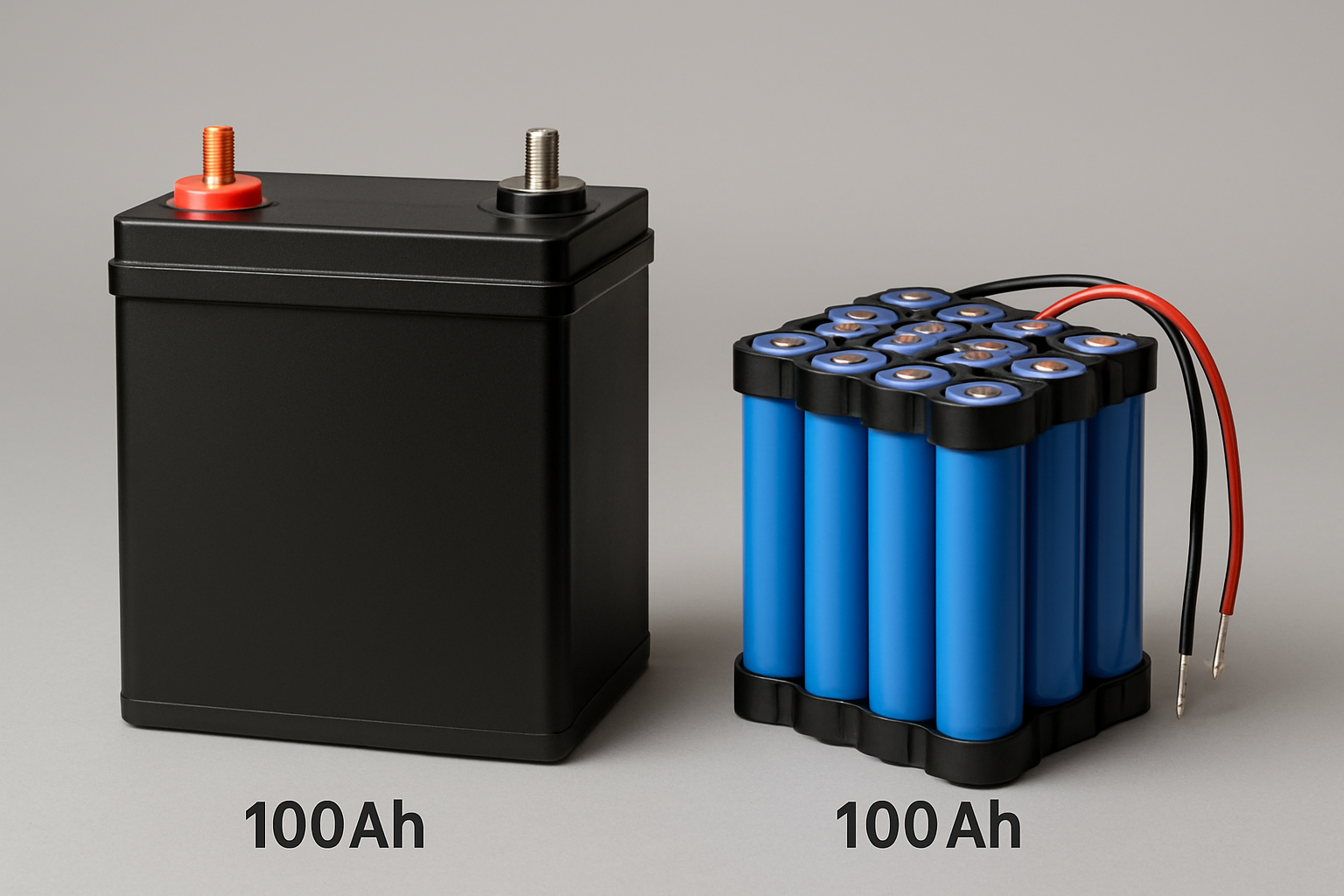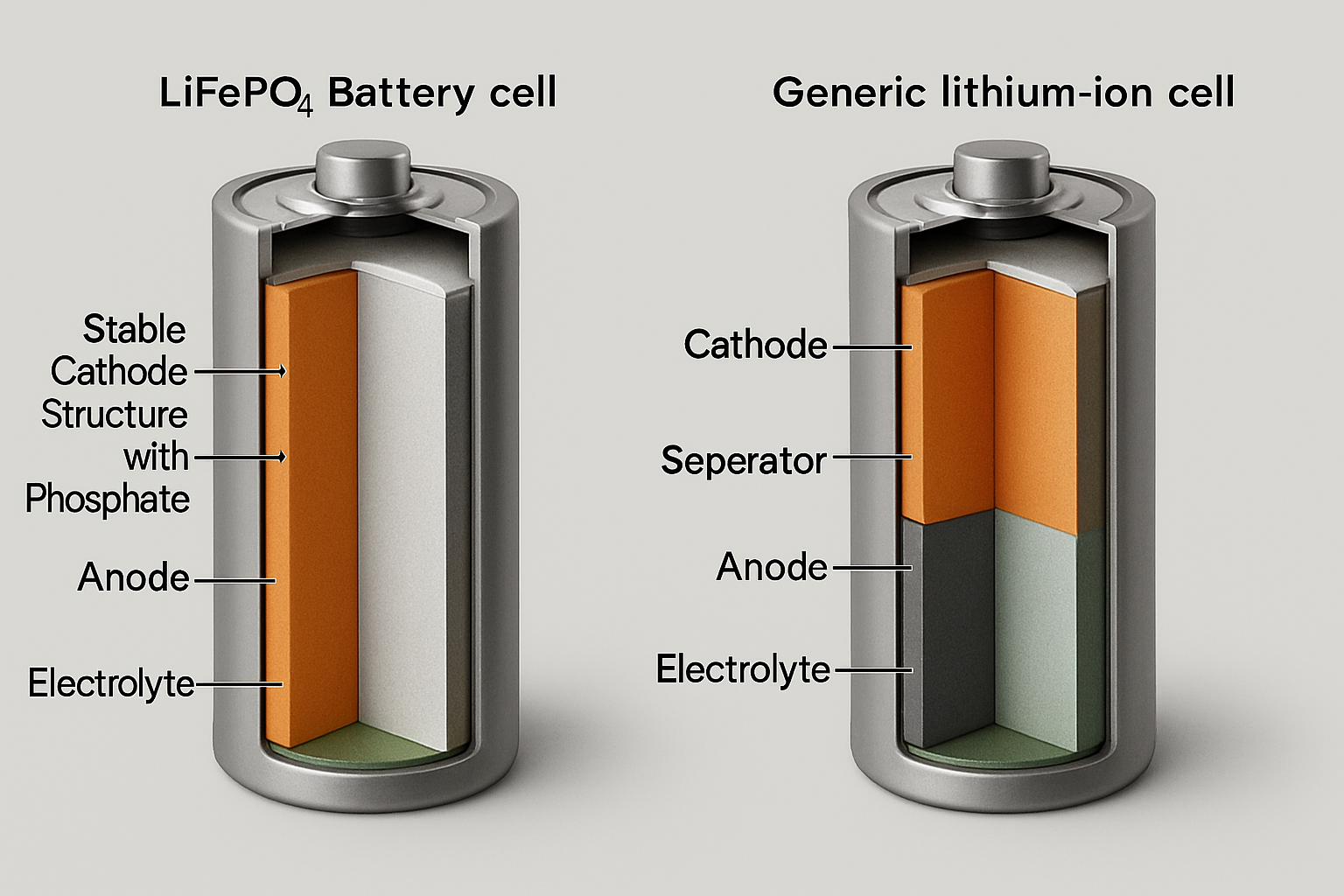When discussing energy storage, the term "lithium-ion" is often used as a catch-all. However, this broad category contains several distinct chemistries, each with unique properties. Among these, Lithium Iron Phosphate (LiFePO4) has emerged as a leading choice, particularly for solar and home energy storage systems. Understanding the lifepo4 vs lithium ion differences is crucial for making an informed decision that prioritizes safety, longevity, and long-term value.
This article provides a clear, in-depth comparison of LiFePO4 against other common lithium-ion chemistries like Nickel Manganese Cobalt (NMC). We will examine the fundamental science, performance characteristics, and real-world applications to help you determine the right battery for your energy independence goals.
Understanding the Fundamental Chemistry
At the heart of any lithium-ion battery is the movement of lithium ions between a negative electrode (anode) and a positive electrode (cathode). While the principle is the same, the material used for the cathode dramatically changes the battery's behavior. This is the core distinction that sets different "lithium-ion" batteries apart.
What "Lithium-Ion" Usually Means
Often, when people refer to a standard lithium-ion battery, they are talking about chemistries like Lithium Cobalt Oxide (LCO) or Nickel Manganese Cobalt (NMC). These are valued for their high energy density, making them suitable for portable electronics like smartphones and laptops, where packing maximum power into a small, lightweight package is the primary goal. However, this high energy density can come with trade-offs in stability and lifespan.
The Unique Structure of LiFePO4
LiFePO4, or LFP, batteries use Lithium Iron Phosphate as the cathode material. This compound has a remarkably stable three-dimensional olivine crystal structure. The strong covalent bonds between phosphorus and oxygen atoms make this structure highly resilient. This inherent stability means the battery is far less prone to releasing oxygen during stress events like overcharging or high temperatures—a primary trigger for thermal runaway in other lithium chemistries. This structural integrity is the foundation of LiFePO4's reputation for safety and durability.
The Core Differences: A Head-to-Head Comparison
Choosing a battery chemistry involves balancing priorities. While one chemistry might offer more energy in a lighter package, another provides unparalleled safety and longevity. Here’s how LiFePO4 and NMC compare on the most critical metrics.
Safety and Thermal Stability: The Defining Advantage
The most significant difference lies in safety. LiFePO4 batteries have a much higher thermal runaway threshold, beginning to decompose at around 270°C (518°F), compared to approximately 210°C (410°F) for NMC batteries. This makes LiFePO4 chemistry exceptionally stable and resistant to overheating. For a system installed in your home, such as a solar energy storage solution, this superior thermal stability provides critical peace of mind. You can learn more about this in our article, Is a LiFePO4 Battery Really Safer Than a Lithium-Ion Type?
Lifespan and Cycle Life: Built for Longevity
Cycle life refers to the number of full charge and discharge cycles a battery can endure before its capacity significantly degrades. Here, LiFePO4 technology demonstrates a profound advantage. A typical LiFePO4 battery can deliver between 3,000 and 7,000 cycles, and sometimes more, while retaining a high percentage of its original capacity. In contrast, NMC batteries generally offer 1,000 to 2,000 cycles. This durability makes LiFePO4 the clear choice for applications that involve daily cycling, such as storing solar energy for overnight use. For a deeper dive, read LiFePO4 vs Li-Ion Cycle Life: A Chemist’s Deep Dive for ESS.
| Feature | LiFePO4 (LFP) | Lithium-Ion (NMC) |
|---|---|---|
| Typical Cycle Life | 3,000 - 7,000+ cycles | 1,000 - 2,000 cycles |
| Nominal Cell Voltage | 3.2V | 3.6V - 3.7V |
| Thermal Runaway Threshold | ~270°C (518°F) | ~210°C (410°F) |
| Operating Temperature (Discharge) | -20°C to 60°C (-4°F to 140°F) | -20°C to 60°C (varies) |
Energy Density and Weight: A Tale of Two Priorities
Energy density is the measure of how much energy a battery can store relative to its weight (gravimetric) or size (volumetric). This is where NMC batteries have a distinct advantage, with a typical gravimetric energy density of 150-250 Wh/kg compared to LiFePO4's 90-160 Wh/kg. This makes NMC ideal for applications where space and weight are critical constraints, such as in electric vehicles or consumer electronics. However, for stationary energy storage, such as a home battery system, the slightly larger size and weight of a LiFePO4 battery are negligible trade-offs for the immense gains in safety and lifespan.
Practical Applications and Performance in the Real World
The technical specifications of a battery only matter in the context of its intended use. The distinct profiles of LiFePO4 and NMC chemistries make them suitable for very different roles.
Why LiFePO4 Dominates Solar Energy Storage
The global shift toward renewable energy has made battery storage a critical component of modern energy systems. The International Energy Agency (IEA) reports that battery deployment in the power sector increased by over 130% in 2023 alone, with LiFePO4 chemistry accounting for 80% of new battery storage installations. This market dominance is no accident. The combination of high safety, long cycle life, and thermal stability makes LiFePO4 the ideal chemistry for a home energy storage system (ESS). These systems must operate reliably every day for years, often in environments like garages or utility rooms that can experience temperature fluctuations. Our integrated ESS solutions are built around high-performance LiFePO4 batteries to provide a dependable and scalable path to energy independence. Explore the reasons in 7 Factors: Why LiFePO4 Outperforms Li-Ion for Solar Energy.
Cost Analysis: Upfront Price vs. Total Cost of Ownership
While the initial purchase price of a LiFePO4 battery might sometimes be higher than an NMC battery of the same capacity, its true value is revealed over its lifespan. The best metric for this is the Levelized Cost of Storage (LCOS), which calculates the cost per kWh delivered over the battery's entire life. Due to its vastly superior cycle life—often 3 to 5 times longer than NMC—a LiFePO4 battery delivers a significantly lower LCOS. This means you pay far less for every unit of energy you store and use over the years, making it a smarter long-term investment. For more on this, see our guide on The Ultimate Guide: LiFePO4 vs Li-Ion Long-Term Value & ROI.
Making the Right Choice for Your System
Selecting the correct battery is the foundation of a reliable energy system. By asking the right questions, you can ensure your choice aligns with your goals.
Key Questions to Ask Before You Buy
- What is the primary application? For stationary storage like a home ESS or an off-grid solar setup, the safety and longevity of LiFePO4 are paramount. For portable devices, the higher energy density of NMC may be preferable.
- How often will the battery be used? For daily cycling, as with solar energy storage, a high cycle life is essential. LiFePO4 is designed for this kind of rigorous use.
- What are the environmental conditions? LiFePO4 batteries operate efficiently across a wide temperature range and their chemical stability makes them safer in high-heat environments.
The U.S. Energy Information Administration (EIA) projects that solar and battery storage will account for 81% of new electricity generation capacity added in the coming year, highlighting the rapid growth and importance of making informed decisions in this sector.
Integrating with Your Solar Setup
A battery is only one part of a complete system. To maximize performance and lifespan, it must be paired with a high-quality Battery Management System (BMS) and a compatible inverter. The BMS protects the cells from overcharging, deep discharging, and extreme temperatures. Our off-grid solar solutions and home energy storage systems are designed as fully integrated units, where the LiFePO4 battery, hybrid inverter, and BMS are engineered to work together seamlessly. This approach ensures optimal performance and protects your investment.
Choosing a Chemistry for Long-Term Value
The term "lithium-ion" describes a family of batteries, not a single product. While chemistries like NMC are excellent for high-power, lightweight applications, their characteristics are not ideal for the demands of stationary energy storage.
LiFePO4 chemistry stands apart by offering an unparalleled combination of safety, an exceptionally long cycle life, and outstanding long-term value. For anyone serious about achieving energy independence with a solar or off-grid system, LiFePO4 is not just an alternative; it is the superior choice. By investing in technology built for durability and safety, you are building a reliable and resilient energy future.
Disclaimer: The information provided in this article is for educational purposes only. It is not intended as financial or investment advice. Please consult with a qualified professional before making any decisions regarding the purchase and installation of an energy storage system.





Leave a comment
All comments are moderated before being published.
This site is protected by hCaptcha and the hCaptcha Privacy Policy and Terms of Service apply.